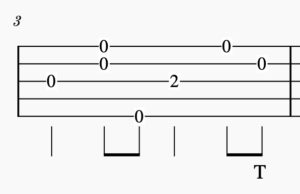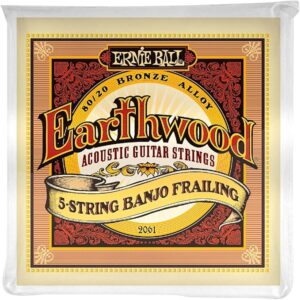Drop Thumb – Clawhammer Banjo Lesson
If you’ve spent a good bit of time with the basic bum ditty clawhammer pattern, it may be time to add the drop thumb motion to your arsenal.
Drop thumb allows you to add more melody notes and greater rhythmic variety to your clawhammer playing.
With the basic bum ditty pattern, your thumb is glued or hooked to playing only the fifth string. With this new technique, the thumb can travel down to the 4th, 3rd, and 2nd strings.
I will preface this lesson with the fact that what I’m about to show you is NOT the most commonly taught drop thumb pattern. However, I think it makes more sense to make the drop thumb technique as similar as possible to the bum ditty pattern rhythmically. This makes for a much more natural learning progression and will allow you to incorporate it. Besides, as with banjo rolls in 3-finger style, drop thumb is a MOTION. It is not a specific/exact pattern of strings in a certain order. Once you master the motion, you can apply it to whatever strings you want in whatever order you would like.
Drop Thumb Pointers
- Your thumb should land on the string before it hits it, just like the bum ditty pattern. We call this preparation. When you strike the 1st string, your thumb should already be on the string.
- Strike downward into the head or at your body, not away from the string. This allows the thumb to find the string much easier.
- Strive for a balanced sound. You don’t want to pop the string or have the thumb note being louder than everything else.
Drop Thumb Demonstration
Here is the first pattern. The first measure is the bum ditty. The second measure is nearly identical, except your thumb will come down for the last note.

Let’s add some melody to this pattern. Play the 2nd fret of the 3rd string (striking it with your index finger), but then you’ll strike the 2nd string with your thumb for the last note.

Next, in the first measure, we carry this even further by playing a melody on the 3rd string and then striking that same note again with our thumb for the last note.
In the last measure, we bring our thumb down to the 4th string for a low accompaniment.

Hopefully, this gives you something new to play with to grow your clawhammer technique.
If you need help advancing with your clawhammer banjo playing, please contact me for online clawhammer banjo lessons anywhere in the world. I can help you become a better player.
Looking for a good Clawhammer Banjo String? I use these Ernie Ball Frailing strings on my Romero open back. They are slightly heavier, so they stay in tune better and have a great plucky tone.

